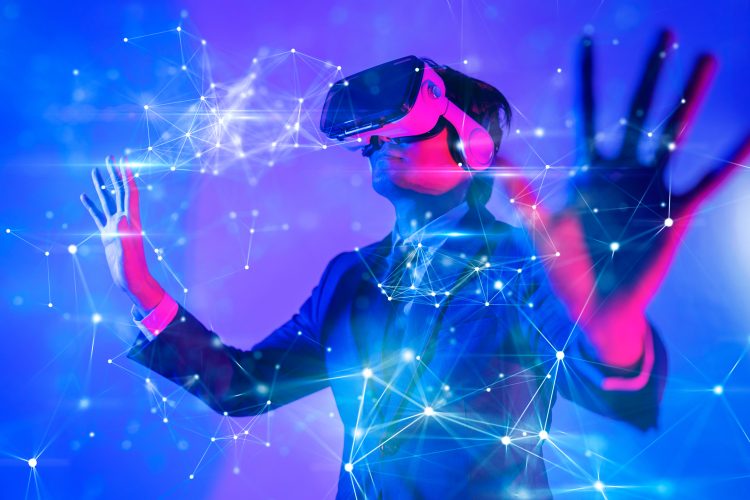The future virtual reality in aircraft rescue firefighter training
- Like
- Digg
- Del
- Tumblr
- VKontakte
- Buffer
- Love This
- Odnoklassniki
- Meneame
- Blogger
- Amazon
- Yahoo Mail
- Gmail
- AOL
- Newsvine
- HackerNews
- Evernote
- MySpace
- Mail.ru
- Viadeo
- Line
- Comments
- Yummly
- SMS
- Viber
- Telegram
- Subscribe
- Skype
- Facebook Messenger
- Kakao
- LiveJournal
- Yammer
- Edgar
- Fintel
- Mix
- Instapaper
- Copy Link
Posted: 2 May 2024 | Leah Kosolofski | No comments yet
Leah Kosolofski, an Aerodrome Inspector and aircraft rescue firefighting (ARFF) specialist for Transport Canada, writes for International Airport Review about how virtual reality can safeguard firefighters in their training and lower the operational costs for their employers.


The world of virtual reality (VR) is revolutionising the way we train and prepare personnel in our workplaces. We are seeing VR used in a variety of industries like aviation, aircraft rescue firefighting (ARFF), military, emergency services, health care, hospitality, retail, space, and tourism to list a few. VR is a safe and cost-effective way to train for the real world in a controlled safe environment limiting environmental concerns and health effects on firefighters.
Benefits of training with VR
We know that firefighting is a hazardous profession. VR training limits the exposures to harsh environments and chemicals associated with the profession. Hazards such as extreme heat and cold, physical exertion, flames, by products of smoke and toxic fumes. Firefighters are also at risk of long-term health issues due to exposure to carcinogens and other hazardous substances. VR training creates a safe and controlled learning environment for firefighters. Let us look at some pros and cons.
Pros:
- Training can be accessed anywhere
- Limits exposures to carcinogens
- Multiple uses within the airport environment
- Unique training from traditional styles
- Can be customised
- Cost effective in the long-term
- Enhanced engagement and knowledge
- Reduced potential for injuries
- Develop muscle memory.
Cons:
- High cost initially for software, hardware
- Learning curve
- Less human interaction
- Technical issues.
VR equipment
I had the opportunity to trial a VR simulation at the Aircraft Rescue Firefighting Working Group Symposium in Orlando. All I can say is wow!
This was my first-time using VR and I will admit I was a bit sceptical. The VR simulation I trailed is used for training ARFF firefighters in aviation aircraft fires. The equipment consisted of a VR headset, thermal imaging camera, self-contained breathing apparatus (SCBA) made for VR and a hose line with a nozzle.
The hose line has an adjustable tension option so you can simulate the weight of a real hose line. There is also a heat vest available that will adjust temperatures as the firefighter progresses closer to the fire.
The instructor has a tablet that controls the difficulty of the scenario from easy to extreme; hose line pressures from 0-100 GPM and suppression agent type of water or foam. Once the scenario is complete, the tablet saves the scenario information and is then used in an after-action review or post incident analysis (PIA). I was sceptical at first, however after my experience, I found VR interactive, engaging and made the learning process enjoyable.
VR scenario
There are any many types of scenarios available depending on what specific topics you wish to target. My scenario at the ARFF Working Group symposium, was an aircraft wheel and brake fire.
The scenario started with seeing an aircraft with flames coming from the starboard side main landing gear assembly. I could not believe how realistic it was standing at an aircraft in the virtual world. I was able to utilise my strategies and tactics in extinguishing this type of fire. I had control of the hose line and navigated through the scenario spraying water and foam by working the nozzle like I would in a real-life incident.
The instructor with the control tablet, was selecting the different options based on what I was requesting. There is a percentage displayed showing whether the fire was extinguished or what percentage of fire was remaining. I was able to teleport myself around the aircraft to get visuals of the fire and to utilise different techniques and tactics. You can also incorporate radio communications and terminology into the scenario. VR training develops your muscle memory so when an actual incident happens, you are ready to function as you trained.
VR can be used in several diverse ways in the airport environment other than solely for ARFF. Let us think outside of the box for a minute. Where can you see VR used in your airport? How about fire extinguisher training, AVOP training of the airfield and aprons, AVOP driver training, employee on-boarding, online training modules, the list goes on. Training programmes can be customised to meet specific needs of the organisation. The cost savings would be enormous.
In closing, as VR technology advances, the potential applications are limitless. This is the future of industry training. VR training may be costly initially to set up, however overall, you will see benefits of training expenses reduced. Research the option of a local or private grant assistance available in your area. VR training eliminates the cost due to travel, hotels, course costs and overtime associated with requiring coverage of shifts while personnel are away. Virtual reality training is limitless, and I am excited to see where this technology takes us. Welcome aboard!


Leah just completed her terms on the ARFF working group board of directors as the Canadian representative. Leah is always looking for ways to improve this rewarding profession.


















